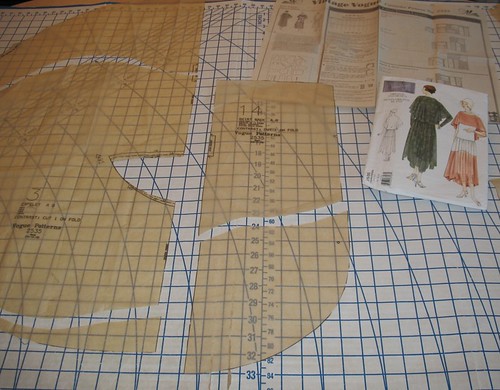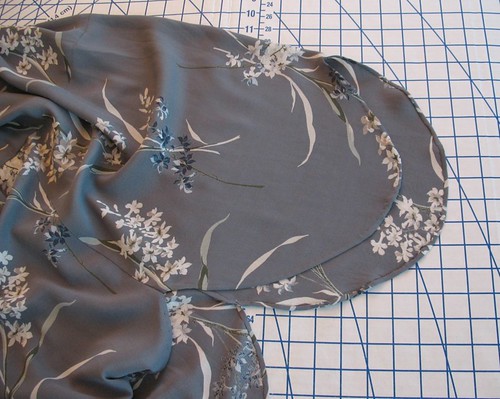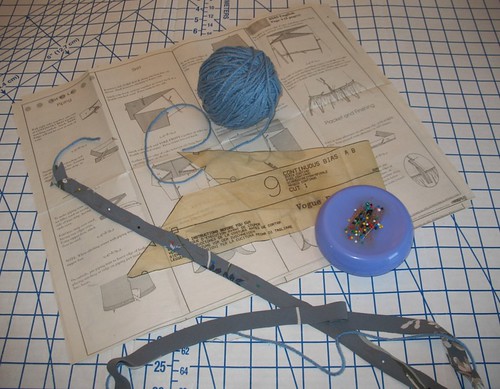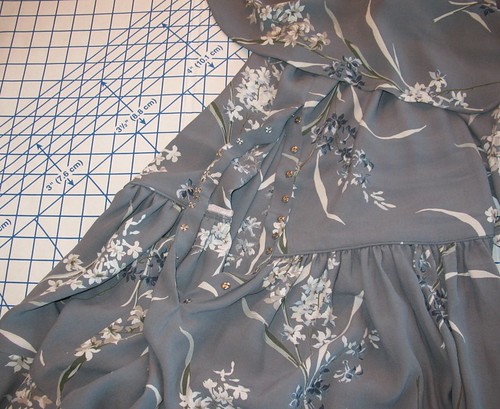My 1920s pattern, Vogue 2535, comes from the lovely Sew Weekly Pattern Swap I attended. It is one of the Vintage Vogues that I initially missed because I
was not buying Vogue patterns back in 2001.
I recall seeing the image in the pattern book at JoAnns, but the style did
not interest me at the time. Since then,
I have kicked myself for not picking up each and every one of the Vintage Vogues that were
available. Every once in a while I come
across one that got away and develop severe pattern envy.
A previous owner of the pattern did something extraordinary, if the style lines drawn on the instruction sheet are anything to go
by. But this also meant that the pattern
tissue was cut apart in quite a few spots.
Lucky for me, most of the scraps were present, and I was able to tape
things back together.
The hem was the first thing that I completed! I used a hand rolled hem because I love to hand stitch. The cape is
also hand rolled.
One thing I would change about the order of construction is
attaching the capelet to the bodice pieces right away. I generally like to follow the directions,
but having all of that extra fabric flopping around was a bit of an irritation,
especially when attaching and fiddling with the gathers on the skirt.
The pattern calls for double seams and leaving all of the
edges raw, but you didn’t think I was going to leave it like that, did you?
I have some lovely dusty pink rayon seam binding from
Mattiecake’s Etsy Shop, and I love the way it looks with the gray fabric.
The piping trim along the waistband is a fun bit of added
interest – I will have to remember this technique in the future. I did not have any cording on hand, so I
substituted a length of yarn from my stash.
As I recall, the yarn is acrylic, so it probably would not shrink, but
just in case, I washed and dried a length before encasing it in the bias
fabric. There is no sense going to the
extra trouble only to have the seam go wonky!
And while I generally avoid side snap closures, this
dress is not fitted, so I decided to use the vintage technique. I did add one hook and created a thread loop
at the hip (the only place that might have a tendency to pull) just to make sure those snaps did not open up. One thing that this opening has going for it
is that it is created with the dress fabric, so there is no weird polyester zipper
buckling on the soft rayon.
Now I just have to go through my pictures of the dress so I can show you the finished product!






What a lovely piece of fabric that you're using for this dress...and I love how you used the rayon seam binding. This dress has being crafted with care and I can't wait to see the reveal pictures!
ReplyDeleteDo you usally hem the skirt part of a dress first. I ask because I making a mock up version of a dress, a lined full skirted type. I am about to hem it and there is quite alot of fabric there from the dress part and the lining and I thought if I had hemmed it first it may have been better. But then again I read I have to leave it to hang for 24 hours first. What do you think.
ReplyDeleteI would say that 99% of the time, the hem is the last think I do on a dress. However, this hemline is supposed to be uneven, and the directions state that the bottom edges are finished before the side skirt seams are sewn, so I thought it would be a fun change of pace.
DeleteThat being said, circle skirts are notorious for stretching, so I would highly recommend constructing the entire garment and leaving it to hang for at least 24 hours before touching the hemline!